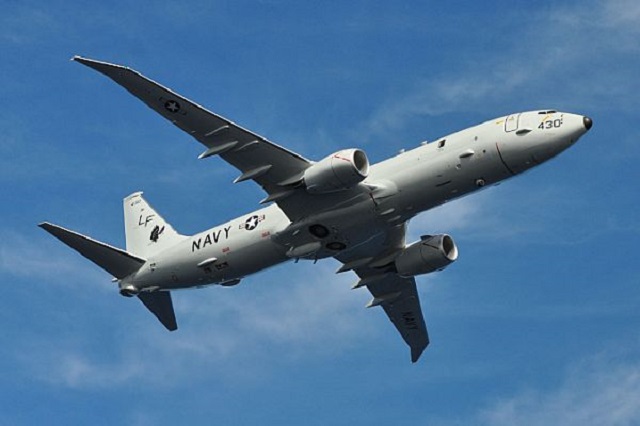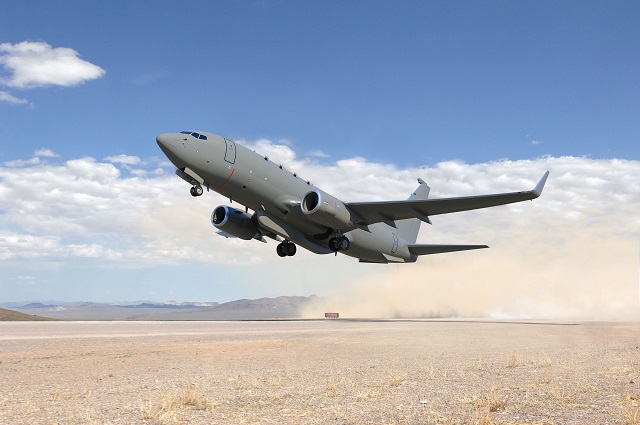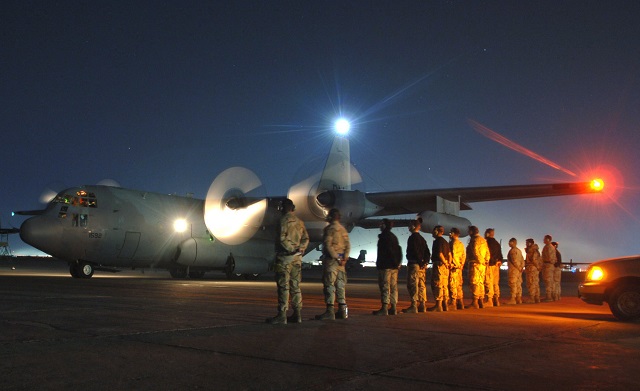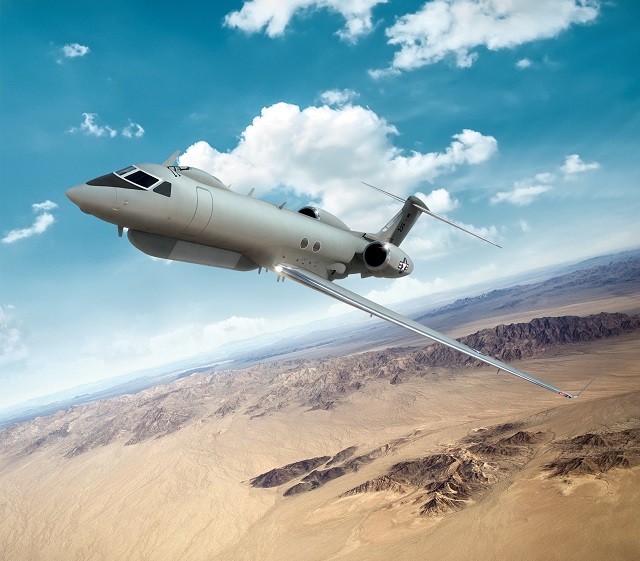Boeing Defense has called for an open competition to replace the EC-130H Compass Call electronic attack turboprop, saying the requirement for a business jet airframe to re-host that equipment should not automatically go to Gulfstream, which will supply its G550 conformal airborne early warning type to create the EC-37B.
Flightglobal reported this week that the air force plans to acquire one G550 CAEW airframe per year over a 10-year acquisition to re-host Compass Call mission equipment on a quicker, higher-flying and more reliable narrowbody aircraft compared to the H-model C-130. But in doing so, the service has stepped over potential alternatives from Boeing, Bombardier and perhaps Embraer and Dassault.
“We absolutely feel like a 737 could do that mission,” says Fred Smith, Boeing Military Aircraft’s director of global sales and marketing for mobility, surveillance and engagement. “It’s got the size, weight, power and cooling that you need for that mission. We’ve already got a lot of technology on these airplanes that we can port over to that mission.
“We firmly believe that [US Defense Department] is best served by having an open competition where everybody brings their best product to the plate to meet those requirements, and that way the government gets the most cost effective and best platform to meet the requirements.”

737-based Boeing P-8A
US Navy
Canada’s Bombardier has reportedly taken exception to the USAF handing the sizable programme to Gulfstream, at a time when Global-series production rates are being cut, and meanwhile, the United Arab Emirates has adopted a second pair of Global 6000 as Saab Erieye airborne early-warning aircraft.
The air force has been on something of a business jet binge of late, requesting special mission derivatives to replace the Northrop Grumman E-8 Joint Surveillance Target Attack Radar System (JSTARS).
In October 2015, the service issued a “capability request for information” for a “notional” acquisition of 10 commercial derivative aircraft capable of hosting two 272kg (600lb) electronic aperture units on the left and right sides and accommodating two aircrew and five mission specialists. The Gulfstream conformal airborne early warning aircraft developed for Israel and subsequently chosen by Singapore, Italy and the US Navy for various roles fits that description.

Boeing's radar-carrying 737-based JSTARS concept
Boeing
For Boeing, being overlooked for the Compass Call mission sets a troubling precedent. The company is competing for the JSTARS recapitalisation programme, which pits the Boeing Business Jet single-aisle airliner that has previously been adapted into the P-8 Poseidon and 737 airborne early-warning and control (AEW&C) platforms against narrower business jets: the Gulfstream 550/650-based Northrop “E-8D” and Lockheed’s version hosted on the Bombardier Global 5000/6000.
Boeing will push military derivatives of its 737 – with features carried forward from the P-8A and AEW&C types like aerial refuelling and reinforced fuselages and wings – to replace as many special mission 707 aircraft in the air force inventory as possible over the coming decade. That includes the E-3 Sentry (introduced in 1978), RC-135V/W Rivet Joint (1964), RC-135U Combat Sent (1964) and RC-135S Cobra Ball (1972).
“JSTARS is having an open competition and we’re very suited to meet those requirements,” says Smith, speaking at a P-8A briefing in Washington DC on 11 May. “We’d like to see all the 707 recaps competed.”
Smith notes that the US government has already spent billions of dollars militarising, strengthening and recertifying the 737 for the P-8 anti-submarine warfare mission. It is now doing the same with the 767 wide-body airliner for the 767-2C-based KC-46A Pegasus aerial refuelling tanker development.

Compass Call in Afghanistan
US Air Force
Regarding Compass Call, the air force claims the G550 CAEW is the only airframe available today that would not need further development or certification work to fulfil the EC-130H role.
Multiple sources have expressed displeasure about Boeing continuing to push airliners in business jet competitions, with some comparing it to a salesperson pushing a sports utility vehicle (SUV) when the customer clearly wants a sedan. Boeing, however, contends that additional space, weight, power and cooling might be needed in the future for new capabilities. It points to Lockheed Martin's failed attempt to develop the Aerial Common Sensor on an Embraer 145 regional jet under an $8 billion programme for 38 aircraft. The G550, however, has significantly more power and payload capacity and has long been performing these types of special military missions.

Northrop Grumman's G550-based JSTARS concept
Gulfstream
Other critics of Boeing's business jet push worry that aircraft competitions are becoming too cumbersome and usually result in a lengthy protest or legal action, with little recourse for the government if an important military procurement is delayed or cancelled. As was the case when Boeing challenged the air force’s KC-X tanker decision and Northrop’s selection for the B-21 bomber programme – an issue that was resolved in February.
The Compass Call programme is run out of the Big Safari special-purpose weapons office at Wright-Patterson AFB in Ohio, with support from L-3 Communications. There are 14 EC-130Hs in the air force’s inventory and half are slated for retirement to cut costs.
Source: FlightGlobal.com
















